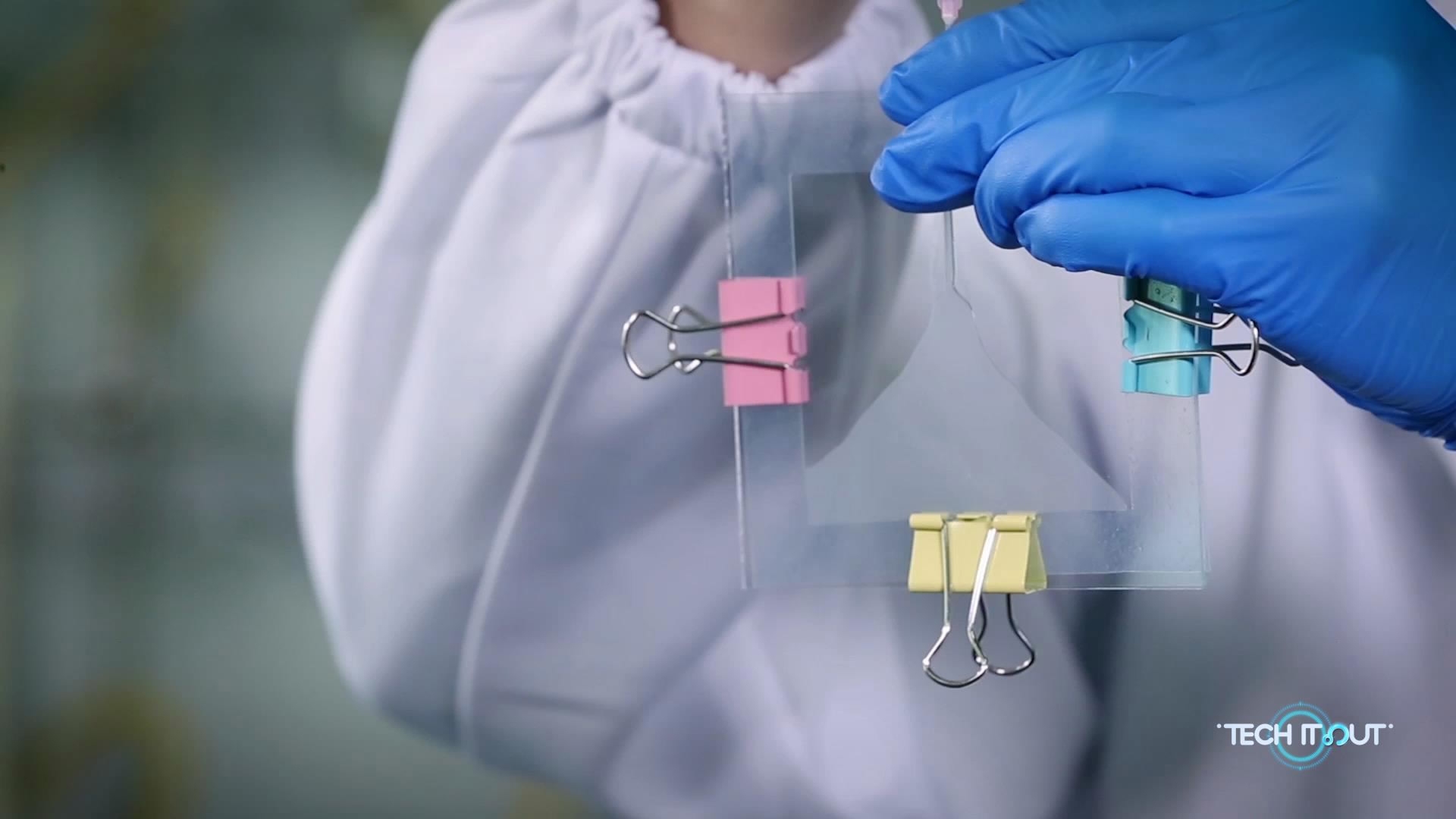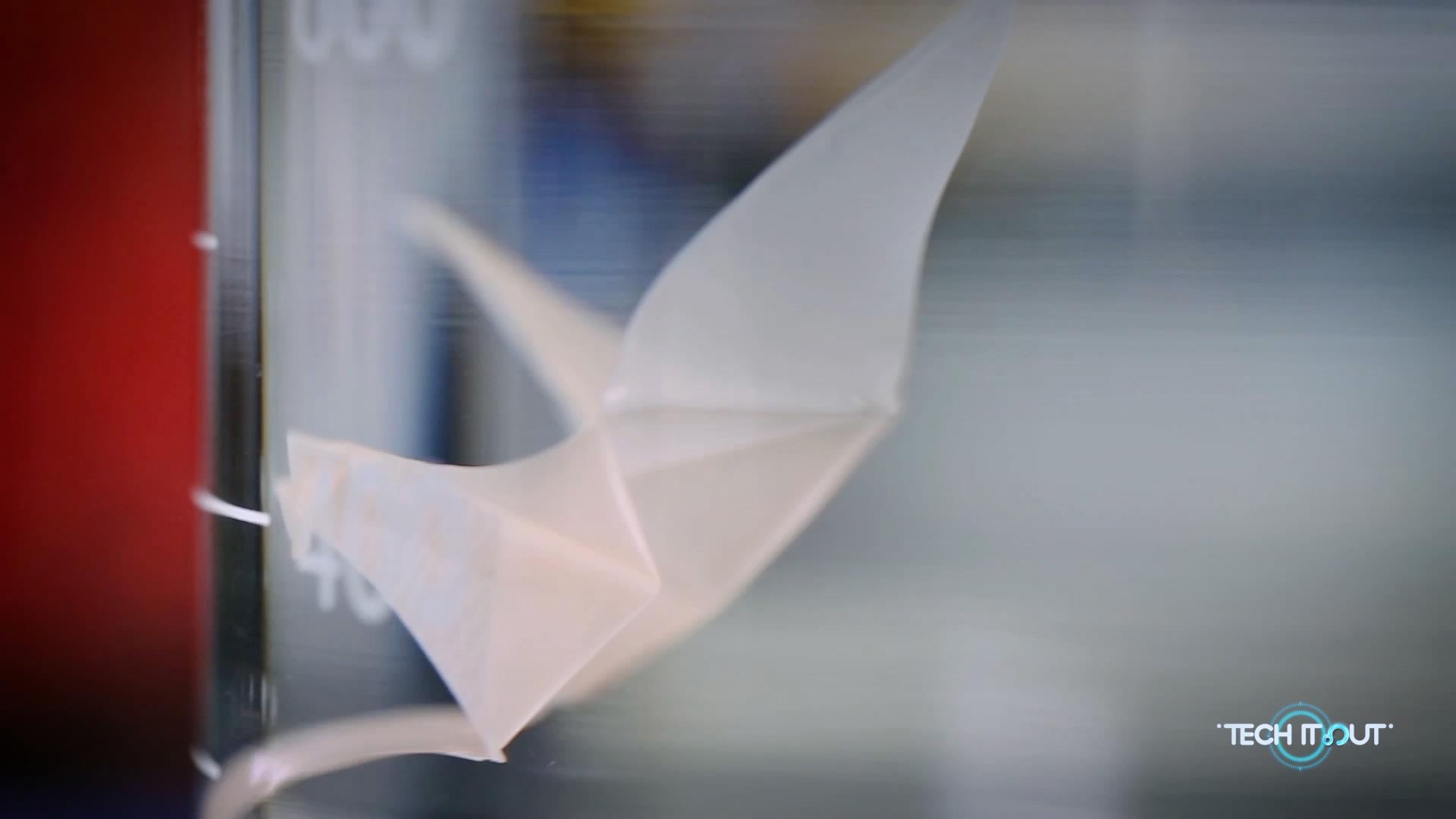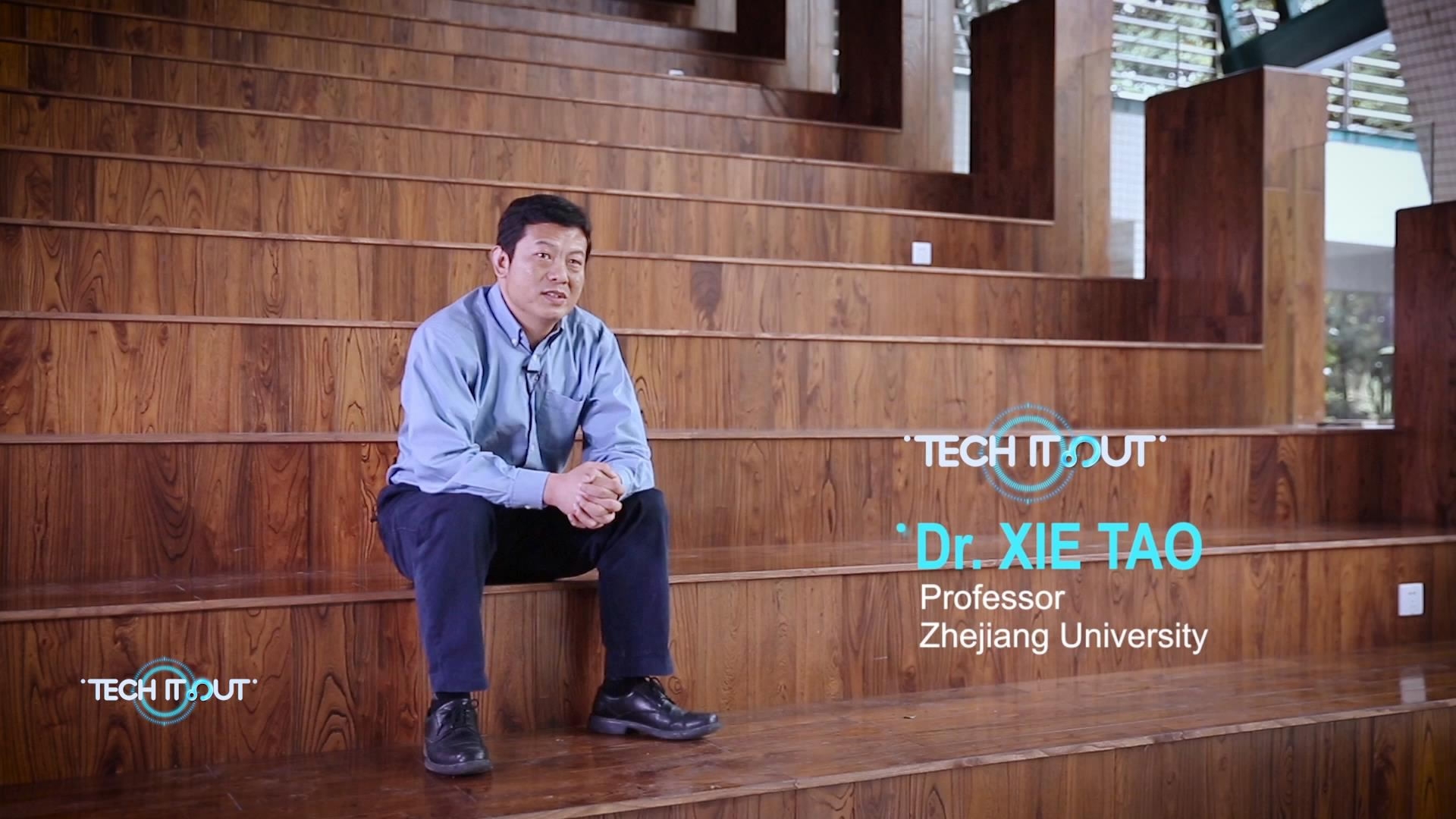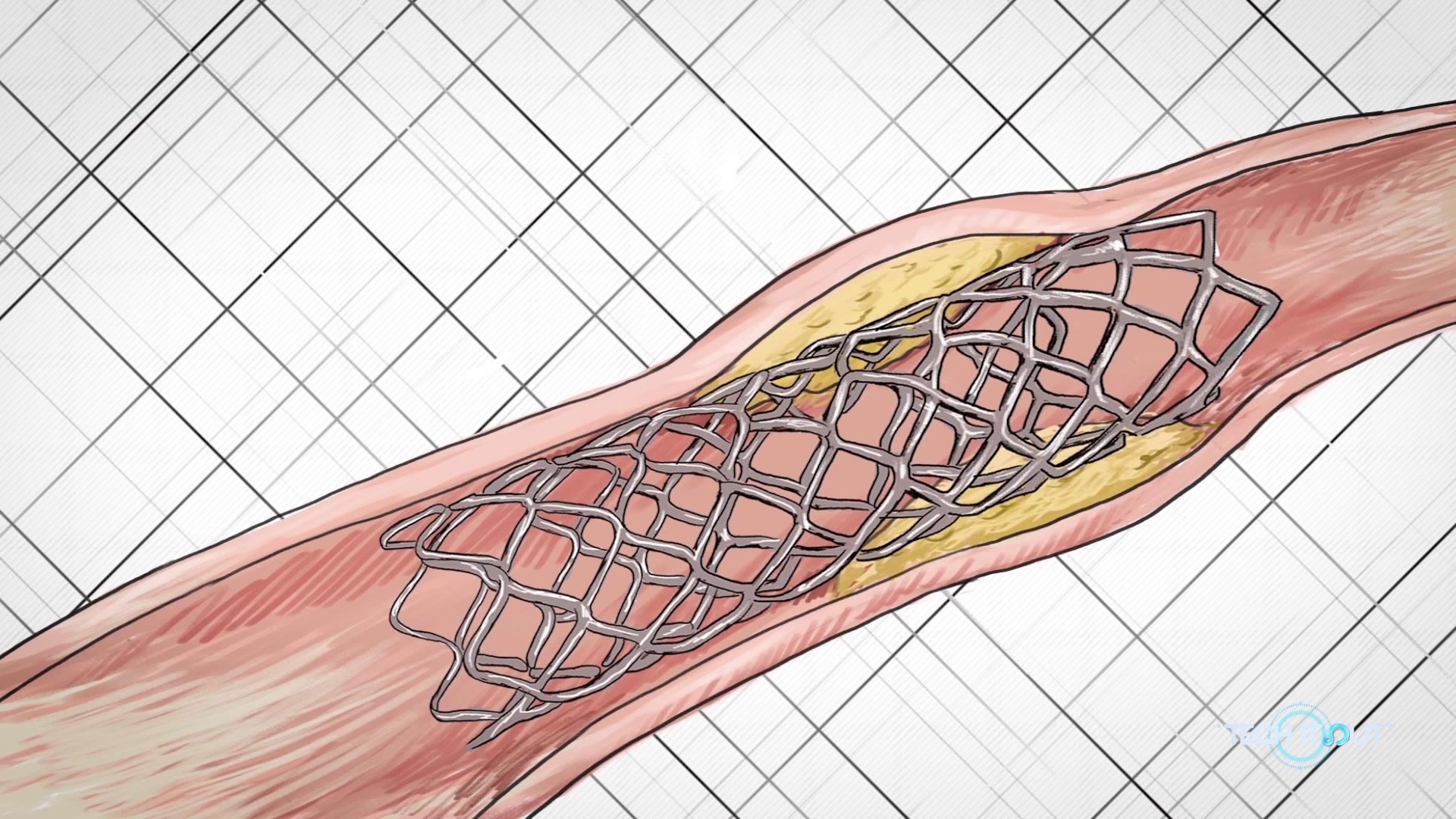
Tech & Sci
11:22, 09-Dec-2017
TECH IT OUT: Self-folding material learns new tricks
By Yang Zhao

Shape alteration is everywhere in nature. In plants, it can be triggered by touch, light, and even food, and it's this power that's inspiring material scientists.
Scientists have created a new material called shape-memory polymer or metals that can be squished, twisted or bent into a “temporary shape," and then, when triggered by heat or light, revert to their original form, as though it has a memory. The recovery relies on a property known as “elasticity."
One of the problems for traditional memory-polymer is that people can fold the material to a shape as complex as they want, but it can only revert to a single memory shape. Can it go from simple to complex? And even more, can people program the material to teach it more than one shape?

A researcher at Zhejiang University making the new type of shape-memory polymer. /CGTN Photo
A researcher at Zhejiang University making the new type of shape-memory polymer. /CGTN Photo
Rather than elasticity – the tendency for a material to return to the same shape – a team from Zhejiang University in Hangzhou, the capital of east China's Zhejiang Province demonstrated a way to trigger a change in a material's plasticity, or it's ability to be reshaped.
A team led by Professor Xie Tao has developed the new shape memory polymer, which allows a simple 2D sheet to fold into a predetermined 3D shape – such as a beautiful origami swan – when triggered by heat.

Self-folding material transforms its shape when triggered by heat. /CGTN Photo
Self-folding material transforms its shape when triggered by heat. /CGTN Photo
To give the material plasticity, researchers started with a known elastic material and added a chemical catalyst. If it works, then when it's above or below the elastic temperature point (around 70 degree Celsius), the material should switch between a default shape and one other shape. But if the temperature rises above the plasticity threshold, about 130 degree Celsius, then the catalyst kicks in by creating chemical bonds between the polymer chains and enables the polymer to memorize a new complex shape.

Professor Xie Tao in Zhejiang University /CGTN Photo
Professor Xie Tao in Zhejiang University /CGTN Photo
The folding patterns inspired by origami have been successfully applied in engineering design, from solar panels that fit into a satellite to airbags that can be opened from a small pack in the car. But when the power of folding combines with material science, the line between materials and mechanics is blurred.

New material could be used in medical implants. /CGTN Photo
New material could be used in medical implants. /CGTN Photo
The team is already working on lowering the response temperatures, so that those little transformers could work with body heat. Among the possible applications is medical implants. Think about the new type of heart stent or cochlear implant made of this material. They could be easily inserted in your artery or ear in a very simple shape without invasive surgery. Your blood temperature will trigger them to automatically turn to the complex shape you need when they arrive at the destination.

SITEMAP
Copyright © 2018 CGTN. Beijing ICP prepared NO.16065310-3
Copyright © 2018 CGTN. Beijing ICP prepared NO.16065310-3